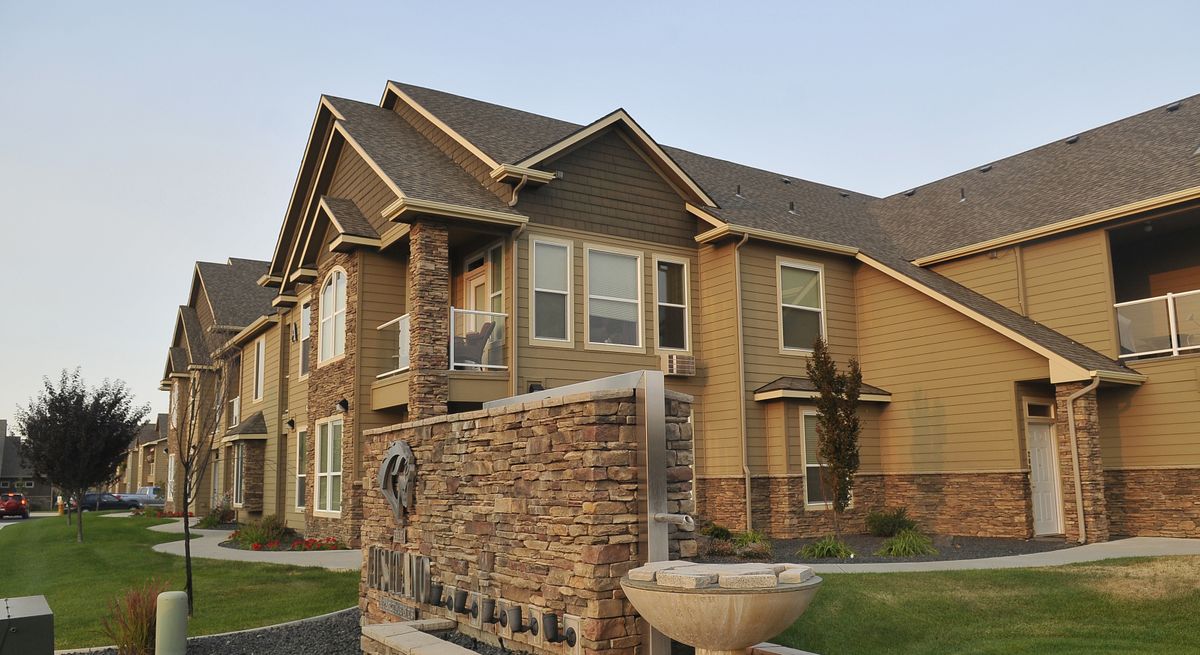Subsidy zones to be cut
City Council looks to limit areas eligible for tax exemptions

A program aimed at boosting development downtown and in key neighborhood centers has perhaps been an even bigger boost to the fringes of town.
That’s one reason why the Spokane City Council on Monday will consider shrinking the boundaries where it will allow developers of condos and apartments to receive tax subsidies to build.
Two large apartment complexes with a total of nearly 300 units were built using the subsidies in the North Indian Trail neighborhood. Developer Harlan Douglass is listed as the taxpayer on the largest of two complexes. His 2012 tax bill for the The Lusitano was about $20,000 instead of the $283,000 he would pay without the subsidy. Attempts to reach a Douglass representative were unsuccessful.
Neighborhood Council President Curt Fackler said the new apartments have burdened roads in an area that didn’t need a subsidy to spur development.
Spokane City Council members generally agree.
“The last thing you want to do is forgo tax revenue in an area where you then have to invest more to bring the infrastructure up to speed,” said Councilman Steve Salvatori, who along with Councilman Jon Snyder has led the effort to change the program.
The city approved the 10-year multifamily tax incentive in 2000. The law was reauthorized in 2007 for an additional five years. At that time, the law was changed so that projects in which at least 20 percent of units would be aimed at low- or moderate-income residents receive the exemption for 12 years. Properties not meeting affordable housing goals only get the subsidies for eight years.
Owners who have a qualified property pay property taxes only on the value of their land and the value of improvements already existing on the property. After the exemption ends, taxes are paid on the full value. The exemption stays with the property even if it’s sold.
Schools, the city and other governments that collect property taxes don’t lose the tax revenue they otherwise would have gained through development. Instead, like exemptions on property taxes for seniors or rehabilitation of historic properties, the tax burden shifts to other taxpayers.
Critics of the program argue that many of the projects built would have been built even without a subsidy. They also say that too many of the projects are aimed at wealthy people who don’t need tax breaks. Indeed, a recent audit of Seattle’s multifamily tax incentive program indicates that many units that were supposed to be available to moderate-income people charged rents that were too high for that group, according to the Seattle Times.
Supporters say that many older parts of town are hard to redevelop without a subsidy. Once the exemptions expire, the tax base is significantly increased from where it otherwise would be, and if done properly, neighborhoods are revitalized, they say.
Subsidies boosted downtown
While some large projects have been built outside downtown Spokane, downtown has seen many smaller, high-profile projects.
Even in a thriving real estate market, renovating an old building into condos didn’t easily pencil out, said Jim Hanley, who along with his daughter Heather Hanley, renovated an old hotel at Washington Street and First Avenue. The tax exemption was enough to persuade them to move ahead with the Lombard Condos, he said.
That was 2006. In the years since, the market has tanked and the Hanleys have sold only one of the project’s seven units. Yet, the building is full because Hanley and his daughter are renting the other units.
“Especially in the time that we are operating in, it’s been very helpful,” Jim Hanley said.
The condos bring people into downtown and will leave a much larger tax base once the exemptions expire, he said. Hanley is confident based on the ease in renting units that they will sell once the economy improves.
Jan Quintrall, Spokane’s business and development services director, lives adjacent to the downtown railroad viaduct in one of the first condo projects built under the program.
Her exemption will expire in the next couple of years, but she said she isn’t contemplating moving. She doesn’t expect her neighbors to move either because the area has become a safe, fun neighborhood.
“It’s a whole different place,” said Quintrall, who supports efforts to shrink the incentive’s borders. “It was a good investment on behalf of the city.”
The smaller footprint for the program under consideration leaves out older neighborhood districts where city planners have long desired to create more multifamily housing.
Ken Close, president of the Greater Hillyard Business Association, said he was unaware until Friday that the City Council was considering removing Hillyard from the program.
City officials say areas like Garland and Hillyard were cut because no one has used the incentives in those districts during the dozen years the program been around.
Close said it’s unfair to cut Hillyard from the program based on disuse, given that development of anything has been extremely difficult since the economic downturn began in 2008.
“But that doesn’t mean that we’re not going to ever,” Close said.
He said cutting Hillyard will put the neighborhood at a disadvantage.
Bonnie Quinn, president of the Garland Business District, said she likewise was unaware that Garland would be removed from the program.
“While economic times are uncertain, many of the Garland business members are committed to creating a vibrant, classic, yet unique – kind of Art Deco style community,” Quinn said. “We hope Garland is filled with specialty boutiques, art, music, entertainment, food and farmers market. This tax incentive could prove extremely helpful to complete the puzzle of a very successful community in the future.”
Snyder, the city councilman, said in debating which areas should be included, the council “started with zero and tried to include the areas most in need.”
“When we incentivize too broadly, we’re not really incentivizing anything,” Snyder said.